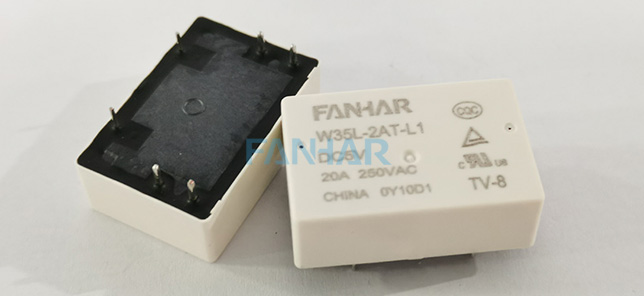Talking about the working principle of electromagnetic relay and relay structure
Views: 7129 Author: Fanhar Relay Time: 2022.07.26
Electromagnetic relay is one of the earliest produced and most widely used relays. Electromagnetic relays are usually composed of seven parts: electromagnetic coil, iron core, armature, contact, return spring, bracket and pin.
How does the relay work?
In fact, the working principle of electromagnetic relay is not as simple as imagined. It mainly relies on the principle of electromagnetic induction to work. When a current is applied to the coil, the coil generates a magnetic field, and the iron core under the coil is magnetized to generate a magnetic force, so the armature is attracted to the iron core under the action of electromagnetic attraction. At this time, the armature drives the support rod to push the leaf spring open, thereby opening the two normally closed contacts. When the current of the relay coil is disconnected, the iron core loses its magnetism, the armature returns to its initial state under the action of the leaf spring, and the contact is closed again.
The first is a static contact that is in a conducting state when the relay coil is not energized, which is called a normally closed contact and is represented by the letter H;
The second is the static contact under the disconnected state, called the normally open contact, represented by the letter D;
The last one is that the moving contact and the static contact are normally closed, and at the same time, they are normally open with the static contact, forming an open-close conversion contact form, which is represented by the letter I. When the coil is energized, the normally closed contact is disconnected by the closed state, so it is also called a dynamic breaking contact, and the normally open contact is called a dynamic closing contact. There are two kinds of changeover contacts, that is, changeover contacts that make first, then break and then make. A relay can have one or more (groups) normally open, normally closed contacts and corresponding transfer contacts.
